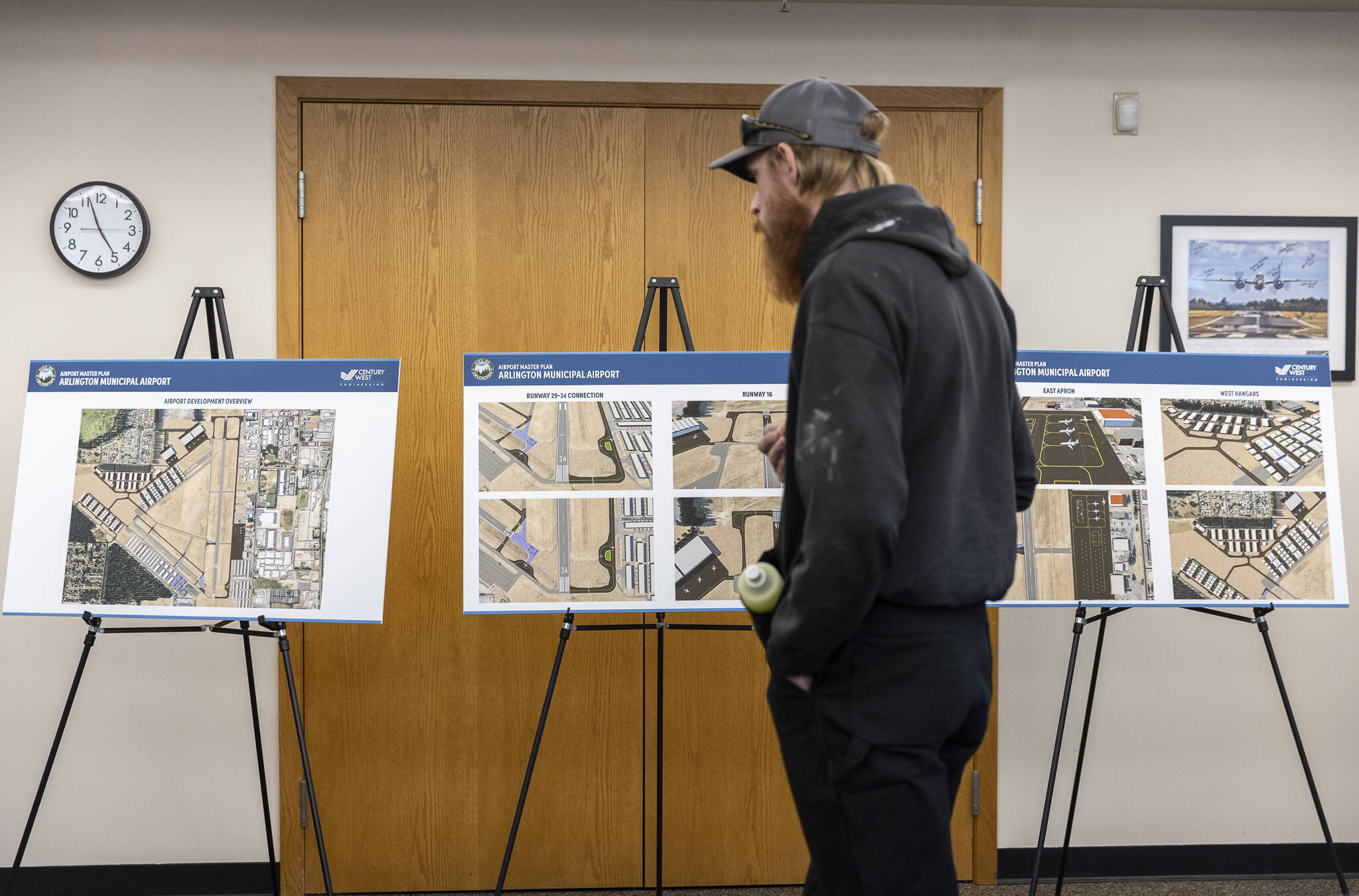ARLINGTON — A member of the public criticized the Arlington Municipal Airport proposed master plan Wednesday during a Planning Advisory Committee meeting over worries about the implications of an extended runway and future hangar development.
The airport master plan explores the airport’s infrastructural needs for the next 20 years and beyond. It designates the large open northwest corner of the airport grounds as space for future incremental hangar development. Also, it notes the possibility of extending runway 16/34 from 5,332 feet to 6,000 feet.
Samantha Peterson, planning project manager with Century West Engineering — the company contracted to complete the master plan — hopes a final draft will be finished by spring, she said.
“It will definitely change the flavor of this airport. It will, in my opinion, kill this airport,” said Dan Tarasievich, member of the advisory committee, during the meeting. “You do that setup there at the north end — northwest corner — it’s done. There will be no Fly-In.”
Tarasievich was referring to SkyFest — previously called the Arlington Fly-In. It’s the largest event in the city, with 15,000 attendees in 2024. It takes place on airport property, where the master plan designates future hangars could be built. Also, a runway extension would allow larger plane traffic, requiring more space for them to be stored, Tarasievich said.
“We want the Fly-In, but maybe it changes over time,” Airport Director Marty Wray said in response. “I’m not going to forego the growth of the airport for an event, any event.”
Hangars will be built based on demand and will be privately funded, Peterson said.
A runway extension would allow for larger aircraft use, Peterson said during an open house after the meeting. However, the Arlington Airport does not yet have the demand for that type of aircraft operation.
“I see that happening beyond 20 years,” Peterson said. While the master plan looks ahead 20 years, it does not require the construction take place within that time.
“The FAA will determine the timing based on funding and need,” she said, referring to the Federal Aviation Administration. “They determine the priorities.”
The master plan identifies areas suited for development based on demand, said David Miller, lead aviation planner with Century West Engineering, during the Planning Advisory Committee meeting. The plan provides flexibility and a vision for the future.
“We don’t expect this level of demand to materialize in the next 20 years,” he said. “Airports accommodate demand; they don’t necessarily generate demand. When the market comes to the airport, that’s when things happen.”
However, the Arlington Airport has already begun to see some growth as rising costs at Boeing Field and Paine Field have pushed some aircraft out, Wray said during the committee meeting.
“We’re experiencing a significant number of people leaving those airports and coming to Arlington,” he said.
Also, the master plan considers where the airport infrastructure needs to be upgraded.
For example, the airport’s east apron needs repaving, Peterson said, and some taxiway systems could be added or redone, based on FAA design standards.
However, significantly different taxiway systems are not needed right now, Miller said during the meeting, even if the volume of traffic doubles.
“The capacity of this runway taxiway system, you should be able to handle significantly more volume than the current rate,” he said.
The public is encouraged to continue providing feedback as the master plan is still only about 75% complete, Wray said.
Taylor Scott Richmond: 425-339-3046; taylor.richmond@heraldnet.com; X: @BTayOkay
Talk to us
> Give us your news tips.
> Send us a letter to the editor.
> More Herald contact information.

























